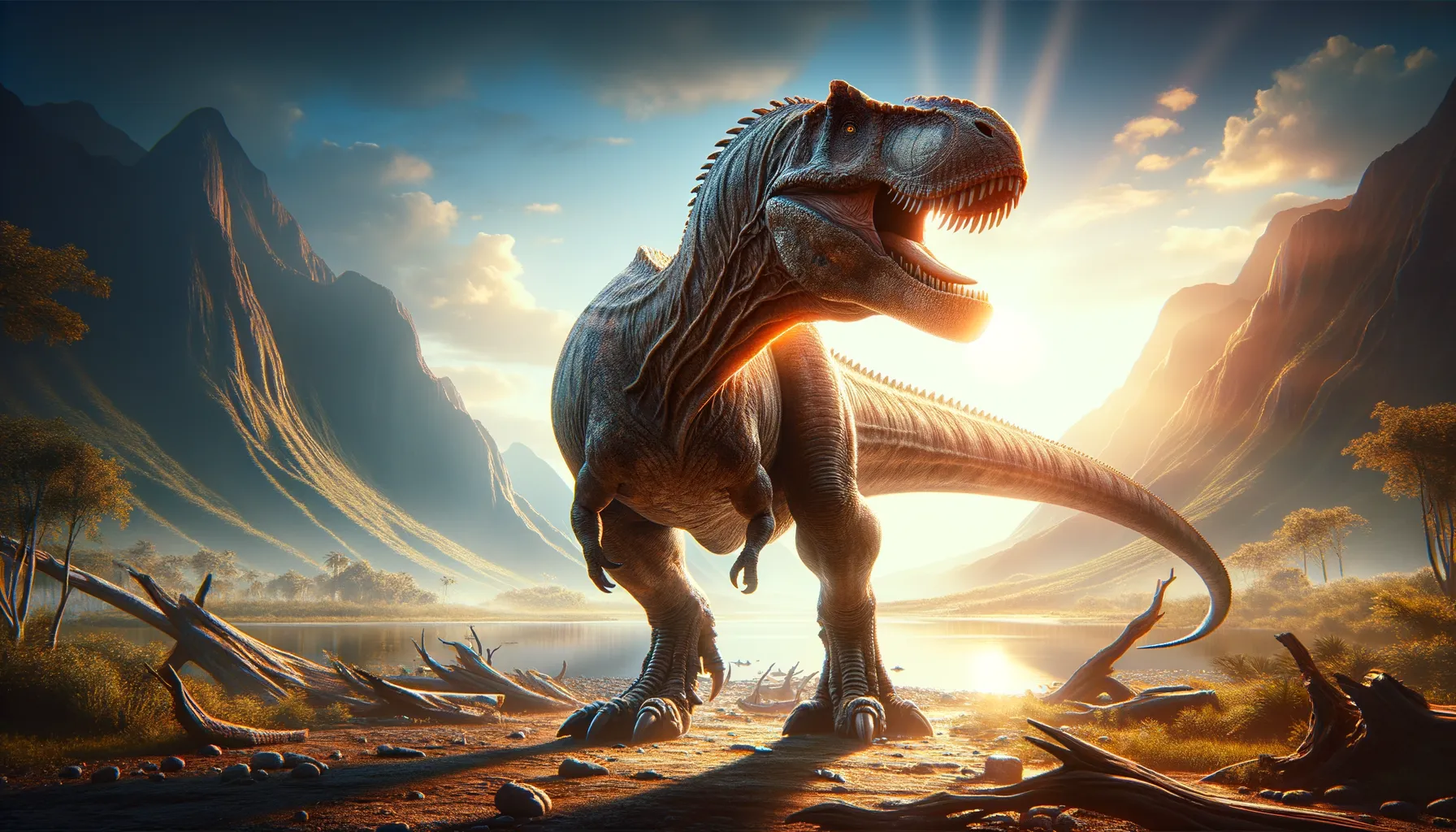
Allosaurus
Jurassic predator with a fierce reputation.
Period
Jurassic
Length
About 8.5 to 12 meters (28 to 39 feet).
Height
Approximately 4.5 meters (15 feet).
Weight
Around 1,500 kg (3,300 lbs).
Allosaurus was a formidable carnivorous dinosaur, known for its impressive size and agility. It thrived in the late Jurassic period, distinguished by its sharp claws and teeth, which were ideal for hunting. As a top predator of its time, it played a crucial role in the prehistoric ecosystem. With strong limbs and a massive head, it dominated North America and was one of the most well-known theropods of the Jurassic era.
Diet
Allosaurus was carnivorous, preying primarily on large herbivorous dinosaurs. Its diet included stegosaurs and sauropods, which it could tackle using its powerful jaws and sharp teeth.
Hunting
Allosaurus likely hunted both alone and in groups, using its agility to ambush prey. Its hunting strategy may have involved short bursts of speed, followed by delivering powerful bites.
Environmental challenges
Living during the Jurassic period, Allosaurus faced challenges such as fluctuating climates and the need to adapt to varied terrains. It also had to compete with other predators for food. Its survival depended on finding sufficient prey and avoiding environmental changes, like droughts, that could affect its food sources.
Speed
Moderately fast, likely up to 19-25 mph.
Lifespan
Estimated to be about 25-30 years.
First discovery
Discovered in 1877 in the Morrison Formation, USA.
Fun Facts
- Allosaurus was a large carnivorous dinosaur that lived around 150 million years ago during the Late Jurassic period.
- Its name means 'different lizard' because its vertebrae were quite different from those of other dinosaurs discovered when it was first found.
- Allosaurus had an impressive set of serrated teeth that it used to rip into the flesh of its prey.
- This dinosaur had three fingers on each hand with sharp claws, which it likely used to grip its prey securely.
- Allosaurus was one of the top predators of its time and could grow up to 39 feet in length.
- Fossils of Allosaurus have been found in the United States, Portugal, and possibly Tanzania.
- There's evidence suggesting that Allosaurus may have hunted in groups, making them even more formidable predators.
Growth and Development
Juvenile Allosaurus grew rapidly, reaching maturity in about 10 years, which was necessary to avoid becoming prey to other predators. Their growth influenced their hunting ability, as young individuals likely targeted smaller prey. Parent Allosaurus may have protected their young, which helped increase survival rates in the wild.
Habitat
Allosaurus inhabited lush forested regions, plains, and floodplains in North America. Its habitat provided ample cover and food sources for hunting. The rich vegetation supported large herbivores that served as its primary prey.
Interaction with other species
Allosaurus would have competed with other large predators such as Ceratosaurus. It may have occasionally preyed on smaller dinosaurs and scavenged carcasses left by other carnivores. Its interactions were driven primarily by survival and hunting opportunities.
Natural lifespan
Typically lived up to 25-30 years in the wild.
Reproduction
Allosaurus reproduced through egg-laying, with evidence suggesting nesting behaviors. The eggs were likely cared for until hatching, with hatchlings being semi-precocial, meaning they were relatively underdeveloped at birth.
Social behaviour
While evidence of pack hunting is debated, it is plausible that Allosaurus engaged in cooperative behavior to increase hunting success rates. This species may have also exhibited solitary behavior, particularly in mature individuals who hunted larger prey.
Fossil locations
Fossils of Allosaurus have been predominantly found in the Morrison Formation in the western United States. These sites have provided significant insights into its anatomy and lifestyle. Key locations include Utah, Colorado, and Wyoming.
